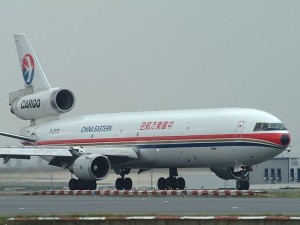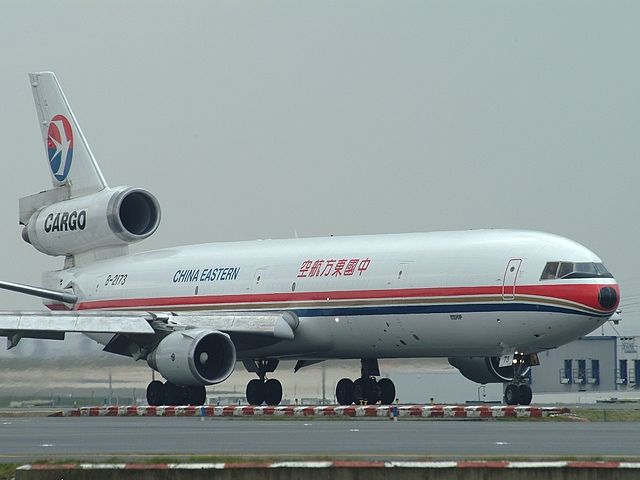 The full-year 2014 was a good year for air cargo, according to WorldACD’s latest report. As volume grew 6.4% over 2013 and U.S. dollar-yield showed a much smaller drop of 1.45%, worldwide revenue of airlines increased 5% after two years of decline, said the air cargo market research service.
The full-year 2014 was a good year for air cargo, according to WorldACD’s latest report. As volume grew 6.4% over 2013 and U.S. dollar-yield showed a much smaller drop of 1.45%, worldwide revenue of airlines increased 5% after two years of decline, said the air cargo market research service.
The origin Asia-Pacific performed above average with a 6.2% revenue increase; in contrast, the Middle East and South Asia (MESA) was well below with a 0.4% drop. North America was the fastest growing destination with a revenue increase of 10.9%.
Monthly yields decreased year-over-year in nine out of 12 months, going up in June, July, and August.
In December 2014, airlines showed a healthy year-over-year volume growth, with chargeable weight increasing with 6.7% and yields dropping with 5.6%.
Although the 2014 yield slump may be “very worrisome figure at first sight,” WorldACD said that this should be seen in the context of two developments.
For one the worsening exchange rate between the Euro and U.S. dollar contributed to an 8.5% dollar-yield decrease for cargo originating in one of the largest markets, Europe.
For another, overall yields were seriously influenced by a further drop in fuel surcharges. Although the yield drop was significant in Asia-Pacific as well (-5.9%), it was rather limited in MESA and North America (-1.6%). The origins North America and Africa were the best monthly performers in revenue growth, with year-over-year gains of 7.1% and 6.9%, respectively.
Looking at the various country pairs (origins and destinations, or O&D’s), as a group the smaller ones outperformed the Top 100: 6.5% against 6.1%. But the Top 20 country pairs did best with a combined growth of 7.5%.
In this group, three O&D’s showed negative volume growth, such as Hong Kong to Japan dropping by 6.2%, while nine showed double-digit growth, with Hong Kong to USA Pacific States being the top ranking with 21.9% growth. The origins Southeast Europe and North Africa showed a double-digit revenue growth of just over 10%.
Regional performance
When it comes to performance by origin, although the area of Europe grew 5.1% in revenue, the group of airlines from Europe itself was not profiting. Most of the revenue growth ex-Europe was realized by Middle Eastern (+15%) and North American carriers (+11%). In all other origin areas, European airlines’ performance was rather flat as well.
The Middle Eastern airlines, on the other hand, performed best for the third year in a row, this time with a year-over-year revenue growth of 13%. They were the fastest growing airlines in all areas, while they were also the only group with a slightly increased yield worldwide. “In other words: this specific group of airlines continued their march towards prominence,” said WorldACD.
Asia-Pacific airlines were mixed: large percentage decreases in the smaller markets of Africa and MESA (-19% and -18% respectively) were offset by more than average growth in North America and Europe, and a slightly increasing share of the revenue in their home region.
North American airlines joined the European airlines in performing below average in most markets, except Europe (+11%). On their home turf, they registered negative growth of -1%.
Continuing the trend from previous years, revenues from pharmaceuticals and perishables outpaced the market, with increases of 16.2% and 7.2%, respectively. Pharmaceuticals grew in yield as well (2%, and even more in Europe), more than the 1.2% increase in 2013. But perishable yields dropped by about 3%, double the average of all cargo taken together. The leading origins in both product markets strengthened their position: Africa and Latin America in perishables, Europe, and MESA in pharmaceuticals.
The top global forwarders showed much the same pattern as in 2013. In the Top 10, five outperformed the market: Kuehne+Nagel, Expeditors, UPS Global Forwarding, Nippon Express, and Kintetsu, the latter showing a growth of well over 10%. The Top 20 slightly underperformed the smaller forwarders. As a group, they continued to lose ground in Africa and Latin America, but slightly strengthened their position in the larger markets Asia Pacific and North America.
Photo: Arpad Gordos





